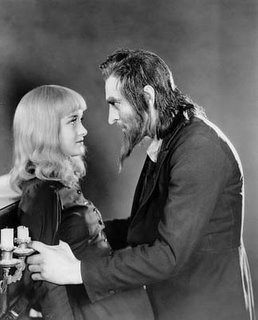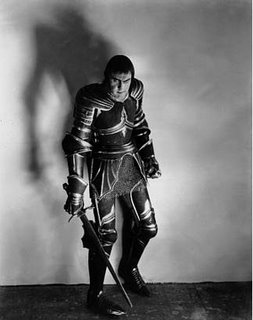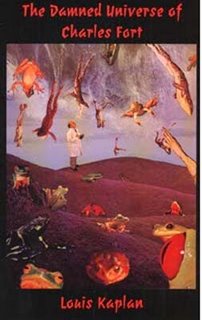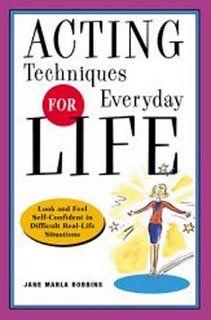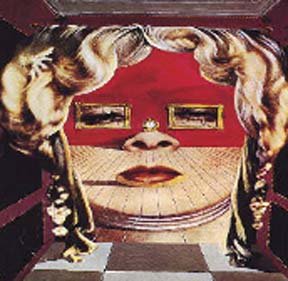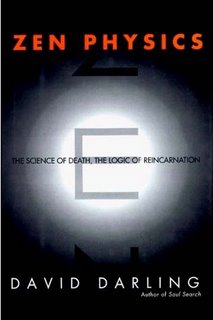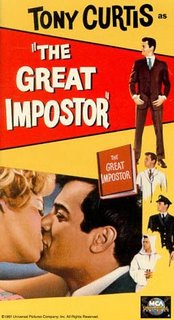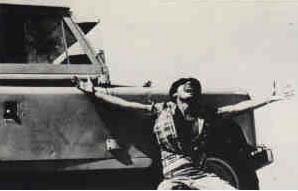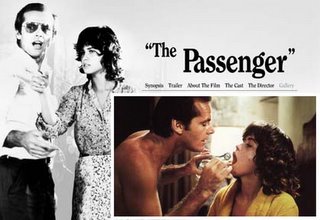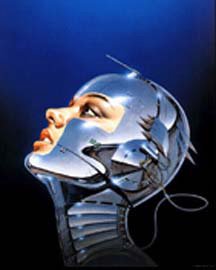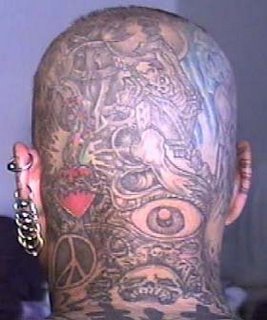
The first few paragraphs of Chapter Seven of Serge Kahili King's book
URBAN SHAMAN provide such an excellent introduction to a discussion of
SHAPESHIFTING and what is generally considered
METHOD ACTING, as these techniques relate to Cinemorphics, that I have quoted them here rather than trying to summarize them:
Shapechanging, sometimes called shapeshifting, is one
of the most natural and strange things that humans
can do. Those names refer to the extreme development of a
talent that all human beings share, the talent of kulike' which
means "to be like the ku." In other words, to take on the
characteristics or pattern of another ku, whether human or
not. The minimal development of this talent is the ability to
mimic.
Many animals also have this ability, which implies changing
one's pattern of appearance or behavior, rather than just
using what you already have. A tiger blends in with its
surroundings because of its natural coloring, but a chameleon
changes its color to blend in with its surroundings. That's
active mimicry. There are insects that act like sticks, fish that
act like rocks, healthy birds that act as if they have broken
wings, and chimpanzees that act like people. There are also
people who act like animals, birds, fish, and insects. I read
a review once about a play in which Zero Mostel was sup-
posed to turn into a rhinoceros and charge across the stage,
without using a costume. The reviewer said that it was not
Zero Mostel acting the part of a rhinoceros charging across
the stage, it was a rhinoceros charging across the stage. In the
movies, an actor took on the role of a bird in Birdy!, and
Don Knotts even played the role of a fish once. In a play
called The Metamorphosis Mikhail Baryshnikov did an
excellent job of portraying a beetle. There is almost nothing in
the known universe which humans have not tried to mimic.

People can mimic anything, with greater or lesser skill. It's
probably the secret to our incredible learning capacity, and
it's so natural that many people don't even realize they are
doing it. I have a friend from New Jersey who has lived in
New Mexico for a number of years. In New Mexico he still
sounds like he's from New Jersey, but when he returns home
his family says he sounds like he's from the Southwest. Once
I took a bus trip and shared a seat with a woman from
Canada for several hours. After an hour and a half of
conversation she said, in a British-type Canadian accent, that I
spoke more clearly than any other American she'd met. In
the same accent I thanked her, only then realizing that I'd
begun to copy her style of speech. A blond, blue-eyed, very
fair woman friend of mine was dating a black man during
one period of her life, and she spent a lot of time in his
neighborhood with his friends. One day they were sitting in
a restaurant in a black neighborhood and some white people
walked in. When a black friend of this woman nudged her
and pointed out how funny the white folks looked, she
realized that she had unconsciously assumed the speech and
behavior patterns of the blacks to such an extent that her
black friends didn't even think of her as white anymore.
It is one thing to mimic unconsciously, or for the purpose
of learning how to do something that someone else can do,
or for the purpose of blending in with your social or physical
environment, and quite a step up to do it for the purpose of
influencing others and gaining powers. This was the
shamanic innovation, and the first stage of it is called acting.
Our whole acting industry comes from a shaman tradition.
Makeup, costumes, staging, musical scores designed for the
performance, and even special effects were invented by
shamans. All of these were, and still are, used to influence an
audience, but the shamanic idea went farther than that. In
many traditional societies shamans acted out the parts of
gods, demons, heroes, villains, and animals not only for
teaching and entertainment, but for magical influence.
In traditional American Indian tribes, a shaman of the dry
Southwest might have donned the garb of the thunderbird
and danced a special dance in order to bring rain to his
people; or a shaman of the Plains might have put on the
horns and pelt of a buffalo and performed a ritual to find or
attract the herds for his people. In Africa I have seen shamans
act out archetypal roles of gods and animals to remove evil
spirits and bring about healings.
Our modem conditioning makes us scoff at the idea that
the behavior of a person, costumed or not, filled with belief
or not, can actually influence the environment. And it's a
valid attitude if you accept the first-level ideas that reality is
outside of us, everything is separate, and energy acts ac
cording to its own laws. But if you accept the second-level
shamanic ideas that the world is what you think it is, that
everything is connected, and that energy flows where
attention goes, then of course the behavior of a person can
influence the environment. The only constraining factor then is
the degree of belief, connection, and energy. Shamans have
specialized in ways to increase the amounts of each of those.
In this chapter we'll be mostly concerned with increasing
the degree of connection.
First though, let's talk a little about the extreme end of
kulike, the art of changing from one form to another. This
is an ancient idea that has never ceased to fascinate human
beings. Gods, of course, are expected to be able to do it. Zeus
became a bull to woo Europa, Odin became a serpent and
an eagle to win the mead of inspiration, and Pele became a
beautiful woman to seduce Chief Lohiau. Our own modern
literature gives this power to certain human beings, either
as a curse or a blessing. So we have Count Dracula who
turns into a vampire bat, Dr. Jekyll who turns into Mr. Hyde
a scientist who turns into the Hulk, and Billy Batson who
turns into Captain Marvel, to name only a very few.
Shamans, also, are expected to partake of this power. Tales
abound of shamans who change into various animals for
different purposes, and in Hawaii the skill was supposed to
include changing into rocks and ropes. The president of an
African country I lived in was reputed to be a shaman who
visited the northern areas in the form of an antelope.
No doubt many such tales are of experiences in Po (the
inner world) rather than in Ao (the outer world), but not
necessarily all of them. Think a bit. If everything is broad
casting its own pattern and if you could match and re-broad-
cast the same pattern, then you would take on the
appearance and qualities of the thing you were matching.
It's theoretically possible within the system we are studying,
and many shamans believe it can be done. If this were an
extension of the talent under discussion that could actually
be developed, it would be very dependent on the skill of
concentration. It really isn't any different from the intention
of certain mystics who meditate on God so they can become
one with God. I'll let you take it from there.

